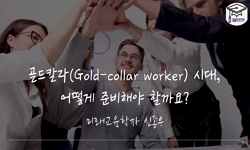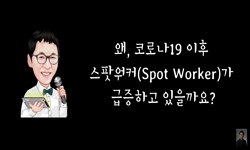이 글은 북한의 ‘인민성’ 개념이 어떻게 구성되고 재현되는지를 살핀 글이다. 북한은 사회 운영과 통치에 필요한 수많은 개념들을 만들어내고 그것을 국가의운영 원리로 삼곤 한다. ‘인...
http://chineseinput.net/에서 pinyin(병음)방식으로 중국어를 변환할 수 있습니다.
변환된 중국어를 복사하여 사용하시면 됩니다.
- 中文 을 입력하시려면 zhongwen을 입력하시고 space를누르시면됩니다.
- 北京 을 입력하시려면 beijing을 입력하시고 space를 누르시면 됩니다.

북한 ‘인민성’ 개념의 구성과 재현 = The Construction and Representation of the Concept of Inminseong(Inmin-ness) in North Korea
한글로보기https://www.riss.kr/link?id=A109644690
-
저자
이하나 (서울대학교)
- 발행기관
- 학술지명
- 권호사항
-
발행연도
2025
-
작성언어
Korean
-
주제어
인민성 ; (로동)계급성 ; 당성 ; 통속성 ; 대중성 ; 민족문화 ; 사상감정 ; 미적 감정 ; 생활감정 ; 예술영화 ; <붉은 선동원> ; <처녀 지배인> ; 일꾼 ; 천리마영웅 ; Inminseong(Inminness) ; working-class character(Rodong Gyegyeop- seong) ; party-ness(Dangseong) ; popularity ; national culture ; thought-emotion ; aesthetic emotion ; life emotion ; art film ; Red Agitator ; Young Female Manager ; worker ; Chollima hero.
-
등재정보
KCI등재
-
자료형태
학술저널
- 발행기관 URL
-
수록면
403-442(40쪽)
- 제공처
-
0
상세조회 -
0
다운로드
부가정보
국문 초록 (Abstract)
북한은 사회 운영과 통치에 필요한 수많은 개념들을 만들어내고 그것을 국가의운영 원리로 삼곤 한다. ‘인민성’은 북한 문학예술의 중요한 창작 원리이자 동시에 북한 사회를 지탱하는 하나의 가치로서 이데올로기적으로 재구성된 이상화된개념이다. 이 글은 ‘인민성’이라는 개념이 어떤 이상적 상태를 지향하면서도 항상현실에 발붙여야 한다는 각성을 불러일으키는 하나의 감성전략적 용어라는 점에주목한다. ‘인민성’은 문학예술 분야의 용어이기 이전에 보다 보편적이고 광범위한 의미를 내포하고 있다. 1960년대 후반 문학예술에서 주체 철학이 관철되면서 본격적으로 ‘당성’, ‘로동계급성’, ‘인민성’이 북한 문학예술의 창작 원칙으로서 정식화되었다. 이 세가지 개념의 관계는 곧 ‘인민성’이 가장 넓고 보편적인 개념이고 ‘로동계급성’이 이보다 구체적이고 한 차원 높은 개념이라면, ‘당성’은 가장 고차원적이고 직접적인 충성심을 의미하는 좁은 개념이다. 이 세 개념은 모두 일종의 품성론인데, 이때 ‘인민성’은 ‘인민의 품성’이 아니라 ‘인민을 위한 공산주의자의 품성’이다. ‘인민성’은 ‘통속성’이나 ‘대중성’을 그 하위 개념으로 포괄하고 있으나 남한에서와 달리 상찬의 의미로 쓰이며 훨씬 더 근본적인 이념을 내포한다.
또한, ‘인민성’이란 일종의 ‘사상감정’으로서, ‘미적 감정’과 ‘생활감정’을 잘 반영함으로써 구현할 수 있다. 특히 인민 생활감정의 묘사는 ‘인민성’을 재현하는 가장 중요한 전략이다. 북한 예술영화에서도 ‘인민성’은 인민을 위한 ‘일꾼’들의 고매한 품성을 시각화하고 생활감정을 진실하게 재현함으로써 구현된다.
이 글은 북한의 ‘인민성’ 개념이 어떻게 구성되고 재현되는지를 살핀 글이다.
북한은 사회 운영과 통치에 필요한 수많은 개념들을 만들어내고 그것을 국가의운영 원리로 삼곤 한다. ‘인민성’은 북한 문학예술의 중요한 창작 원리이자 동시에 북한 사회를 지탱하는 하나의 가치로서 이데올로기적으로 재구성된 이상화된개념이다. 이 글은 ‘인민성’이라는 개념이 어떤 이상적 상태를 지향하면서도 항상현실에 발붙여야 한다는 각성을 불러일으키는 하나의 감성전략적 용어라는 점에주목한다. ‘인민성’은 문학예술 분야의 용어이기 이전에 보다 보편적이고 광범위한 의미를 내포하고 있다. 1960년대 후반 문학예술에서 주체 철학이 관철되면서 본격적으로 ‘당성’, ‘로동계급성’, ‘인민성’이 북한 문학예술의 창작 원칙으로서 정식화되었다. 이 세가지 개념의 관계는 곧 ‘인민성’이 가장 넓고 보편적인 개념이고 ‘로동계급성’이 이보다 구체적이고 한 차원 높은 개념이라면, ‘당성’은 가장 고차원적이고 직접적인 충성심을 의미하는 좁은 개념이다. 이 세 개념은 모두 일종의 품성론인데, 이때 ‘인민성’은 ‘인민의 품성’이 아니라 ‘인민을 위한 공산주의자의 품성’이다. ‘인민성’은 ‘통속성’이나 ‘대중성’을 그 하위 개념으로 포괄하고 있으나 남한에서와 달리 상찬의 의미로 쓰이며 훨씬 더 근본적인 이념을 내포한다.
또한, ‘인민성’이란 일종의 ‘사상감정’으로서, ‘미적 감정’과 ‘생활감정’을 잘 반영함으로써 구현할 수 있다. 특히 인민 생활감정의 묘사는 ‘인민성’을 재현하는 가장 중요한 전략이다. 북한 예술영화에서도 ‘인민성’은 인민을 위한 ‘일꾼’들의 고매한 품성을 시각화하고 생활감정을 진실하게 재현함으로써 구현된다.
다국어 초록 (Multilingual Abstract)
Moreover, “Inminseong” is regarded as a form of “thought-emotion" that can be realized through an accurate reflection of “aesthetic emotions” and “life emotions.” In particular, the depiction of the emotional dimensions of everyday life is the most significant strategy for representing “Inminseong.” In North Korean art films, “Inminseong” is actualized by visualizing the noble character of “workers for the people” and authentically portraying the emotional experiences of everyday life.
This article examines how the concept of “Inminseong”(Inmin-ness) is constructed and represented in North Korea. North Korea has developed numerous concepts necessary for social governance and management, often elevating them as fundamental princi...
This article examines how the concept of “Inminseong”(Inmin-ness) is constructed and represented in North Korea. North Korea has developed numerous concepts necessary for social governance and management, often elevating them as fundamental principles of state operation. “Inminseong” is both a critical creative principle in North Korean literature and arts and an ideologically reconstructed, idealized value that sustains North Korean society. This study highlights that “Inminseong,” while striving for an idealized state, functions as an emotional and strategic term that continuously demands grounding in reality. “Inminseong” is a term that encompasses a more universal and expansive meaning beyond its use in the literary and artistic domains. In the late 1960s, as Juche philosophy became the guiding principle in literature and the arts, “Dangseong”(party-ness), “Rodong Gyegyeopseong”(working-class character), and “Inminseong” were formalized as the foundational principles of literary and artistic creation in North Korea. Among these, “Inminseong” is the broadest and most universal concept; “Rodong Gyegyeopseong” is more specific and a step higher in abstraction, while “Dangseong” represents the most direct and elevated form of loyalty, narrowly defined. These three concepts collectively constitute a theory of character, where “Inminseong” does not signify the “character of the people” but rather the “character of the communist devoted to the people.” “Inminseong” subsumes subordinate concepts like “popularity” and “mass appeal,” yet unlike in South Korea, it carries a connotation of commendation and encompasses a more fundamental ideological meaning.
Moreover, “Inminseong” is regarded as a form of “thought-emotion" that can be realized through an accurate reflection of “aesthetic emotions” and “life emotions.” In particular, the depiction of the emotional dimensions of everyday life is the most significant strategy for representing “Inminseong.” In North Korean art films, “Inminseong” is actualized by visualizing the noble character of “workers for the people” and authentically portraying the emotional experiences of everyday life.
동일학술지(권/호) 다른 논문
-
- 역사문제연구소
- 유경순
- 2025
- KCI등재
-
- 역사문제연구소
- 이정은
- 2025
- KCI등재
-
- 역사문제연구소
- Max Altenhofen
- 2025
- KCI등재
-
- 역사문제연구소
- 장경호
- 2025
- KCI등재




 KCI
KCI KISS
KISS






